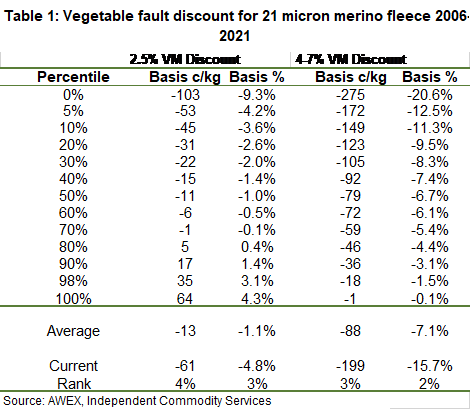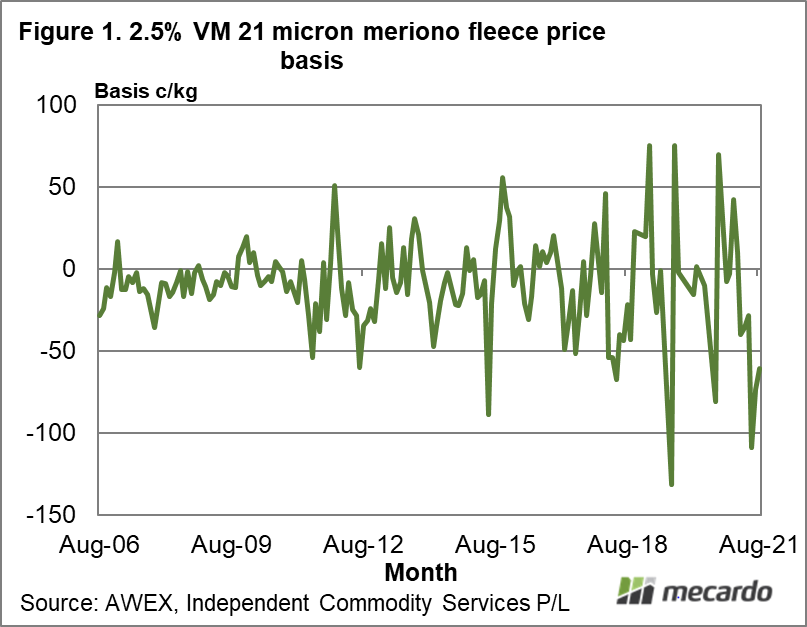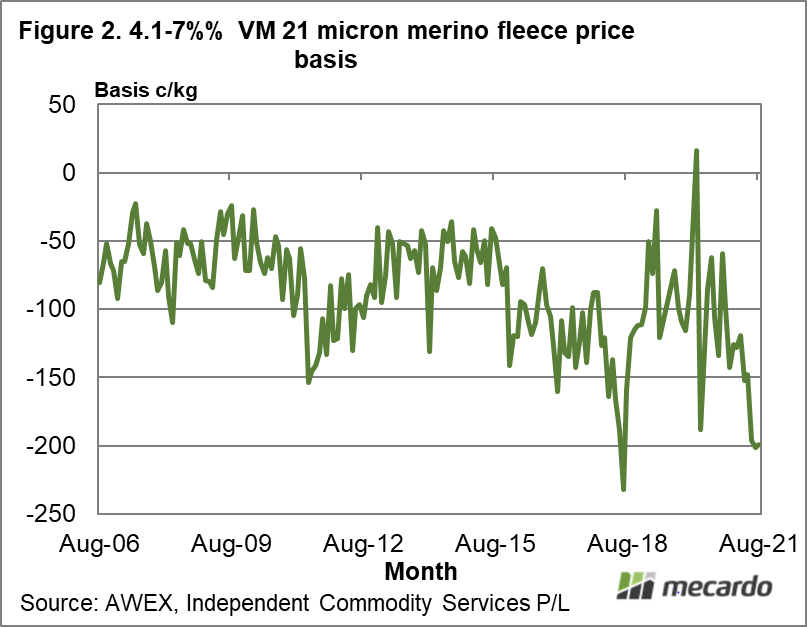Discounts for vegetable matter normally reach a seasonal maximum early in the season, with supply generally near a peak. This appears to be happening again in 2021.
In May, Mecardo looked at the seasonal pattern in the supply of vegetable fault (VM) in the Australian clip showing how from September onwards it tends to fall. It seems the combination of August weakness in prices (again) with the seasonal peak in high VM and the big increase in broader Merino micron supply has put a lot of pressure on discounts for VM in broader Merino fleece prices.
Figure 1 shows a monthly difference in price for 2.5% VM 21 micron fleece (around 90 mm in staple length) from 2006 onwards compared to a base price of 0 to 1.8% VM. While the average discount is around 1% or 13 cents clean (see Table 1) it swings around from positive to negative. In effect, the schematic in Figure 1 is saying that normally a VM level of 2.5% in broader Merino fleece does not have a big effect on price. This is not the case now where the discount is swinging between 50 and 100 cents, even more if the lot has a low yield below 60%.
Table 1 shows the percentile analysis for Figure 1, in both cents per kg terms and percentage terms. The current rank for the discount is 3-4%, which means it has only been lower for a small amount of time in the past 15 years. It was noticeable in last weeks auction sales that broad Merino fleece with 2-3% VM was heavily discounted, especially if the VM was combined with another fault such as low yield or staple strength.
Figure 2 gives a better view of the discounts as it compares 4.1-7% VM 21 micron fleece to the same base (0-1.8%) – the larger difference in VM level results in a larger discount with less room for the vagaries of topmaking, consignment building and wool specifications to muddy the view of this discount. Table 1 shows the average discount has been around 7% or 88 cents clean for the past 15 years. The discount for the range of VM, in both absolute and proportional terms, is also close to the lowest levels of the past 15 years with rankings in the 2-3% range.
What does it mean?
From a VM perspective, it is not a good time to sell broader Merino fleece with higher VM levels. The usual risk applies to holding this wool in that while the discounts are very likely to shrink in the coming months, the final price achieved will depend on the base (low VM) price.
Have any questions or comments?
Key Points
- Discounts for VM levels above 2% are likely to shrink as sales move into the spring and the supply of vegetable matter in fresh shorn wool falls.
- Depending on the VM level these discounts could easily shrink by 50 cents clean for 2.5% VM fleece and by 100 cents clean for 4.1-7% VM wool.
- Drought lots that have been held over from 2019 which have very low yields and some VM will recover at a slower rate, as the supply chain blends them into the mix of wool used.
Click to expand
Click to expand
Data sources: AWEX, ICS , Mecardo















